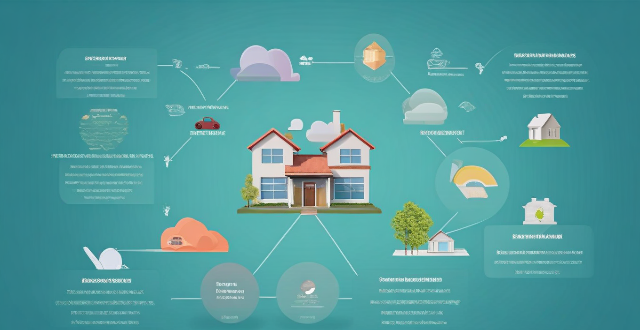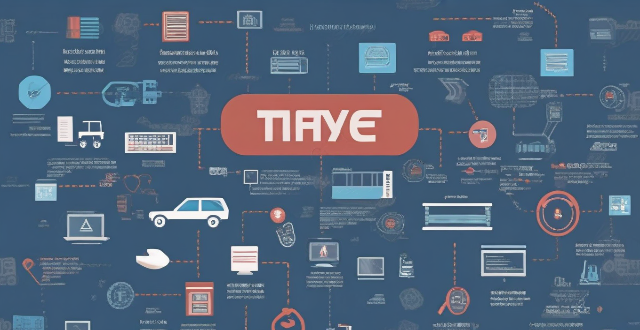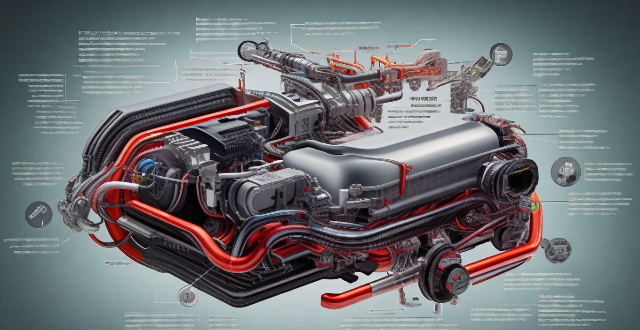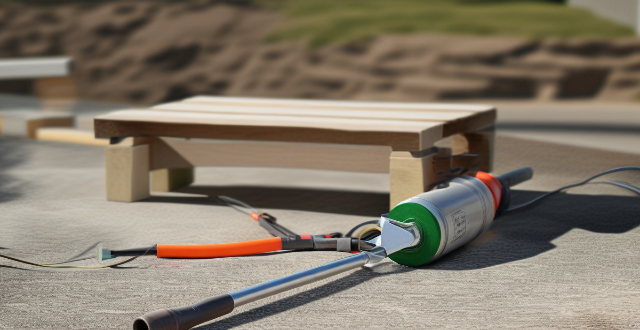Range Install

How much does it cost to install a wind turbine ?
Installing a wind turbine can be a significant investment, and the cost varies depending on several factors such as the size of the turbine, location, and installation complexity. Here is a detailed breakdown of the costs involved in installing a wind turbine: 1. **Turbine Cost**: Small Turbines typically used for residential purposes can cost anywhere between $30,000 to $50,000. Large Turbines used for commercial purposes can cost upwards of $1 million. 2. **Site Assessment and Permitting**: Site Assessment involves evaluating the site for wind speed, topography, and other factors that affect the performance of the turbine. The cost can range from $5,000 to $15,000. Depending on the local regulations, obtaining necessary permits can cost between $5,000 to $20,000. 3. **Foundation and Construction**: The foundation needs to be strong enough to support the turbine, and the cost can vary between $10,000 to $30,000. The actual installation of the turbine can cost between $6,000 to $12,000. 4. **Electrical Connections and Grid Interconnection**: This includes setting up the wiring and electrical connections needed to connect the turbine to your home or business. The cost can range from $8,000 to $15,000. If you plan to sell excess electricity back to the grid, you will need to set up a grid interconnection. This can cost between $5,000 to $10,000. 5. **Maintenance and Operational Costs**: Regular maintenance is required to ensure the turbine operates efficiently and safely. Annual maintenance costs can range from $1,000 to $3,000. This includes costs associated with operating the turbine, such as insurance and taxes. The cost can vary depending on the location and size of the turbine. 6. **Total Cost**: The total cost of installing a wind turbine can range from $75,000 to $1.5 million or more, depending on the size and complexity of the project. It is important to consider these costs before deciding to install a wind turbine. In conclusion, installing a wind turbine can be a costly endeavor, but it can also provide long-term benefits in terms of energy savings and reducing carbon footprint. It is essential to carefully evaluate the costs and benefits before making a decision.

How to install a burglar alarm system at home ?
This guide provides a comprehensive step-by-step process for installing a burglar alarm system at home, covering aspects like system selection, layout planning, tools and materials gathering, control panel installation, sensor placement, device connection, testing the system, programming settings, and maintenance tips. It emphasizes the importance of choosing the right system based on type, features, reputation, and cost. The guide also highlights the significance of proper sensor placement, power source planning, and using appropriate tools and materials. It details the procedure to install the control panel, sensors, cameras, and glassbreak detectors, followed by connecting devices either wirelessly or through hardwiring. Testing the system, setting up user codes, and customizing settings are crucial steps before regular maintenance and troubleshooting ensure the system's longevity and effectiveness.

How do I install the latest iOS update on my iPhone ?
Updating your iPhone to the latest iOS version is essential for maintaining optimal performance, security, and access to new features. Here's a step-by-step guide to help you through the process: Before starting the update, ensure you have backed up your iPhone, charged it to at least 50%, and connected to Wi-Fi. To update via OTA (Over-the-Air), go to Settings > General > Software Update and tap "Download and Install" if an update is available. For a wired connection, backup your device, connect your iPhone to your computer using a Lightning cable, open iTunes/Finder, select your device, and click on "Check for Update." After the update has been installed, your iPhone will restart several times to complete the installation process. Check for app updates separately and explore any new features or changes introduced with the update.

What is the range of an electric car ?
The range of an electric car, or the distance it can travel on a single charge, depends on factors such as battery size, driving conditions, and energy efficiency. Larger batteries generally provide longer ranges, but they also increase weight and cost. Driving at high speeds, in cold weather, or uphill can reduce range, while efficient powertrain systems use less energy for propulsion. The average range of electric cars is increasing over time, with many offering between 150-300 miles per charge under ideal conditions. Some high-end models boast even greater ranges, exceeding 400 miles on a single charge.

What is the range of a typical electric car ?
The range of an electric car refers to the distance it can travel on a full charge, which varies depending on factors such as battery size, energy efficiency, driving conditions, climate control, and tire pressure. Typical ranges for city driving are around 100-150 miles, while highway driving ranges are typically around 70-100 miles. For a mix of city and highway driving, most electric cars have a range of around 80-120 miles.

How do I install an electronic speed controller in my vehicle ?
An Electronic Speed Controller (ESC) is a device that regulates the speed of an electric motor. It is commonly used in RC cars, drones, and other electronic devices to maintain consistent speed and improve performance. In the context of vehicles, an ESC can be used to control the speed of electric motors in electric or hybrid cars. Installing an ESC in your vehicle involves several steps, which may vary depending on the specific model and make of your vehicle. Here's a general guide to get you started: 1. Choose the right ESC for your vehicle. 2. Disconnect the battery before working on any electrical system in your vehicle. 3. Remove the old controller (if applicable). 4. Mount the ESC in a suitable location within your vehicle. 5. Connect wires and motor according to the manufacturer's instructions. 6. Reconnect the battery and test the system. There are several reasons why you might want to install an ESC in your vehicle, including improved performance, better control, and additional safety features such as overcurrent protection. When installing an ESC, it's important to follow the manufacturer's instructions, wear protective gear, and seek professional assistance if needed.

What is the range of a typical communication base station ?
The typical communication base station, also known as aThe typical communication base station, also known as a specific geographic area with wireless The range of a base station can vary based on the type of technology used, the height and location of the tower, and the surrounding environment. Different technologies have different range capabilities, with newer ones like 4G and 5G offering greater coverage and capacity than older technologies like 2G. Tower height and location also play a significant role in determining its range, with taller towers covering wider areas and being less affected by signal blockage. The surrounding environment, including urban or rural areas, can impact the range of a base station. The typical range of a base station can be from a few hundred meters to several kilometers, with practical ranges often being smaller due to interference and other factors. Network operators may use multiple base stations and other techniques to optimize coverage and capacity within their service areas.

Firefox does not allow users to block advertisements. It simply teaches you how to manually install ublock

What is the range of a parallel hybrid electric vehicle (PHEV) ?
The range of a parallel hybrid electric vehicle (PHEV) depends on several factors, including battery size, driving habits, road conditions, and fuel economy. Larger batteries provide longer ranges, while smaller batteries offer shorter ranges. Driving habits also play a significant role in determining the range of a PHEV. Road conditions can affect the efficiency of both the internal combustion engine and electric motor, leading to lower overall range. The combined range of a PHEV typically falls within the range of 300-600 miles, depending on the model and driving conditions.

What is the driving range of a Series Hybrid Electric Vehicle ?
The driving range of a Series Hybrid Electric Vehicle (SHEV) is influenced by factors such as battery pack size, electric motor efficiency, and vehicle weight. Most SHEVs have a combined driving range of around 30-50 miles per gallon equivalent (MPGe), but actual range may vary due to factors like driving conditions and use of accessories. Proper maintenance and consideration of these factors can help maximize the fuel efficiency and environmental benefits of a SHEV.

How can I install a distributed energy system in my home or business ?
Installing a Distributed Energy System (DES) in your home or business can significantly reduce reliance on the grid and provide financial savings. The process involves assessing energy needs, site evaluation, financial analysis, system design, permitting, installation, and maintenance. Choosing the right technology, sizing the system appropriately, and selecting quality equipment with certified installers are crucial steps. Permitting includes checking local regulations and coordinating with the utility for interconnection. Installation involves mounting equipment, electrical connections, and system checks. Maintenance ensures optimal performance through cleaning, inspections, and performance tracking. This investment requires careful planning but offers substantial rewards.

How long does it usually take for the iOS update to download and install ?
The time it takes for an iOS update to download and install can vary depending on the size of the update, internet connection speed, and device performance. Factors affecting the process include the size of the update, with larger updates taking longer to download than smaller ones; internet connection speed, where a fast, stable internet connection is crucial for quick downloads; preparation time after the download, which is relatively quick and shouldn't take more than a few minutes; installation time, typically around 10-20 minutes depending on the size of the update and the device; overall, combining both downloading and installing, the entire process can take anywhere from 40 minutes to over an hour and a half. Tips for a smooth update include backing up your device before starting any update, using a stable Wi-Fi connection for updating, ensuring that your device has at least 50% battery life before starting the update, and updating your device when you won't need it for a while, such as overnight.

What kind of range can you expect from a Wi-Fi 6 router ?
Wi-Fi 6 routers offer faster speeds and better performance than previous standards. However, their range can be influenced by factors like physical obstacles, interference from other devices, router placement, channel selection, and device capabilities. With optimal conditions, a Wi-Fi 6 router can cover an area of about 1,500 square feet, but this varies based on the mentioned factors. To maximize its range, consider central placement, reducing interference, updating devices, and using quality hardware.

How can I improve my flexibility and range of motion during sports recovery ?
Improving Flexibility and Range of Motion during Sports Recovery: - Incorporate dynamic and static stretching routines before and after physical activities. - Use foam rolling for self-myofascial release to aid recovery and increase range of motion. - Include yoga or Pilates in your routine to improve flexibility and balance through mindful movements and breath control. - Maintain proper nutrition by staying hydrated, consuming adequate protein, and eating anti-inflammatory foods. - Ensure adequate rest through sleep and active rest days. - Practice consistency in these strategies and track progress to monitor improvements over time. - Consult with professionals like physical therapists and sports trainers for personalized guidance and injury prevention.

Are wireless home security systems more effective than wired ones ?
The text discusses the advantages and disadvantages of wireless and wired home security systems. Wireless systems are easy to install, flexible, have no monthly fees, and offer remote access but require periodic battery replacement and may experience signal interference and limited range. Wired systems are reliable, not susceptible to signal interference, have a longer lifespan, and are suitable for larger homes but can be difficult to install, cause damage to walls, lack flexibility, and may come with monthly fees.

How do I install a car charger in my vehicle ?
Installing a car charger in your vehicle is a straightforward process that can be done with just a few tools and some basic knowledge of your car's electrical system. Here are the steps you need to follow: - Choose the right location for your car charger. - Disconnect the battery before working on your car's electrical system. - Remove the trim panel from the location where you want to install the car charger. - Run the wires from the car charger to the battery, making sure they are securely attached and not in the way of any moving parts. - Use a voltage tester to make sure there is power running through the wires. - Reassemble the trim panel, making sure it is securely in place and not blocking any controls or vents. - Test the car charger to make sure it is working properly by plugging in a device and seeing if it charges.

How do I install and maintain a combination motor drive system ?
A combination motor drive system, also known as an integrated drive system or hybrid drivetrain, is a complex assembly of components designed to deliver power from the engine to the wheels of a vehicle. It typically includes an internal combustion engine, one or more electric motors, and a transmission that may incorporate both mechanical and electronic control systems. This guide will walk you through the installation and maintenance process for such a system.

Can I install fiber optic broadband myself or do I need a professional ?
Fiber optic broadband installation is complex, requiring specialized tools and skills. While self-installation can save money and offer flexibility, it carries risks of damage and safety concerns. Professional installation ensures quality, time-saving, and support but can be costly. It's generally recommended to hire a professional for a smooth and reliable installation process.

Can I install a home security system myself or do I need a professional ?
This guide helps individuals decide whether to self-install a home security system based on technical skills, time availability, budget, and system complexity. It outlines steps for DIY installation including research, planning, choosing the right system, gathering tools, and troubleshooting. The benefits of professional installation such as expertise, guaranteed workmanship, and customization are also discussed. The conclusion emphasizes that the decision depends on personal circumstances and preferences.

What is the average distance an electric vehicle can travel before needing to recharge, and how does this affect infrastructure planning ?
The average travel distance of electric vehicles (EVs) has increased significantly due to advancements in battery technology, with most modern EVs offering ranges between 200-400 miles on a single charge. This improvement affects infrastructure planning for charging stations, which must consider urban and rural needs, highway fast charging, and residential and workplace solutions. Addressing range anxiety through ample charging options is crucial for wider EV adoption, and governments are implementing policies to facilitate this transition.

What are the different types of burglar alarms available in the market ?
Burglar alarms come in various types, each with its own advantages and disadvantages. Wired systems are reliable but expensive to install, while wireless ones are easier to set up but require battery replacements. Monitored alarms offer 24/7 protection for a fee, while unmonitored ones rely on neighbors to alert authorities. Smart alarms provide remote monitoring and advanced features through a subscription, and DIY systems offer customizable, easy-to-install options with potentially fewer features.

What steps should I take to secure my home before installing a security system ?
Before installing a security system, it is important to take certain steps to secure your home. These steps include assessing your home's vulnerabilities, strengthening doors and windows, improving lighting around your home, installing locks and alarms, and securing your garage. By following these steps, you can significantly improve the security of your home before installing a security system.